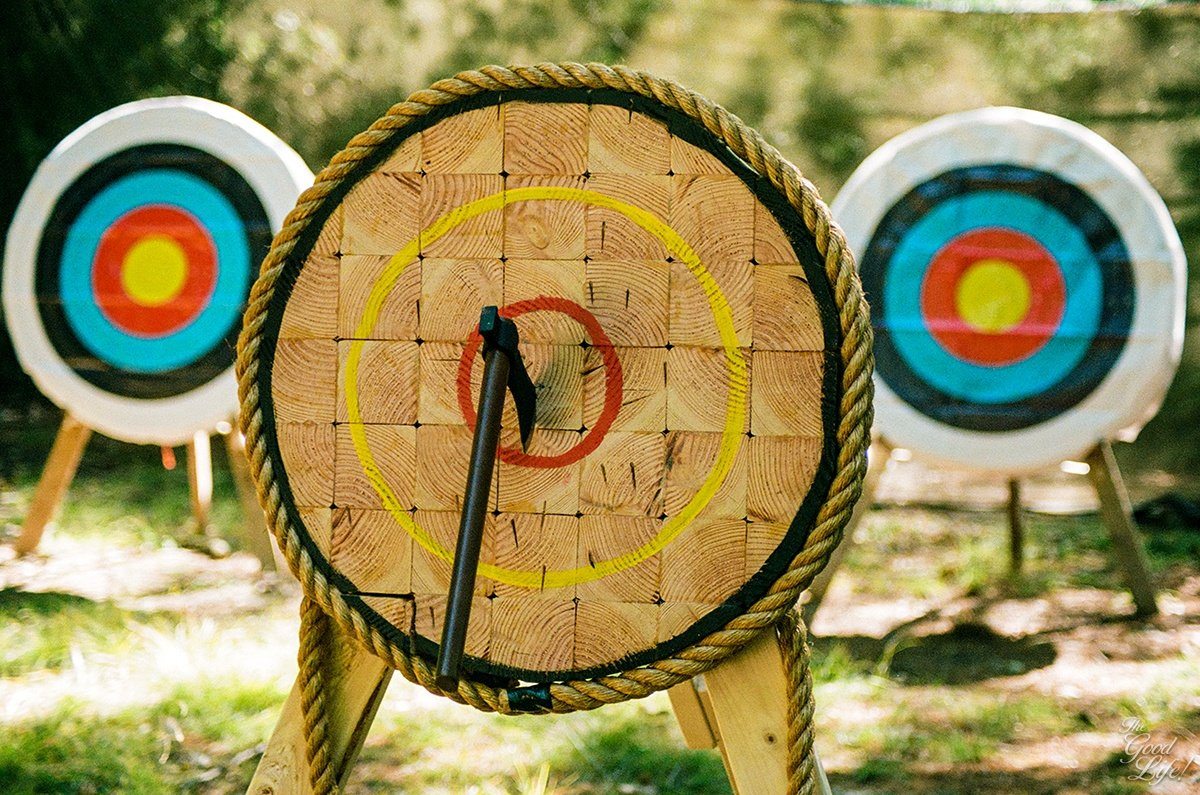Over the years, hatchet and axe throwing has become a popular lumberjack sporting event. You may be able to visit a local business that offers targets to play, but you can just as easily build your own wooden target board at home.
With some simple materials and a little elbow grease, you can impress friends with your axe throwing skills in the backyard or camping.
What type of wood should I use for my axe throwing target?
Ideally the wood you use should be not too soft and not too hard. Softer wood allows for the axe to stick when you throw it, but too soft and your target will degrade quickly. Pine and spruce are both good options. Look for wood that is free of dark spots and knots, especially towards the center of your target. When building your target, pay close attention to the direction of grain. Vertical grain will mirror the impact of the hatchet blade and stick tightly after a well-timed throw.
When purchasing wood, look to support your local lumber mill or consider utilizing a tree stump. Stumps have a circular wood grain pattern, but also work well as targets.
Don’t worry if your target gets lots of wear and tear. Targets soften over time and variation in the wood surface actually helps the axe head find better entry. Misting the target with water after use will help preserve the wood and minimize splinters next time you play. Note: store the target in a cool, dry place when not in use; a waterlogged target board won’t be of much use!
What's the best type of throwing hatchet?
If the goal of your throwing game is to have fun, any old hatchet will do. When learning to play, start with a heavier axe or hatchet (between three to five pounds) as they will stick in the wood easier.
If your goal is precision, try a lighter axe (between one and two pounds). Lighter hatchets are also ideal when lugging lots of gear out to a camp spot!
▶▶▶ Our carbon steel Field Hatchet is a good option for experts, coming in at just over a pound.
How does scoring work?
The goal of the game is simple: throw the hatchet and if your hatchet sticks within a ring you get a number of points.
If your axe lands between two rings, you take the points for the highest-value ring. These points range from 1-4 depending on which ring they hit.
The bullseye in the center is worth 6 points. Hitting the clutch dead on will land you 10 points.
How to Build a Hatchet Throwing Target
---

Your target board can be as fancy or as simple as you’d like it to be. You can hang your target board or build your own standardized stand-up version.
(We prefer using a hanging board as it’s easier to transport and utilizes less wood. If you’d like to build your own standard stand-up target follow these step by step instructions.)
For a hanging target board, four 2 inch x 10 inch boards made of your preferred wood will do.
Note: the bullseye should technically be 63” off the ground. Keep that in mind when you decide where to hang it!
Once your 2 inch x 10 inch boards are secured together, grab a few sharpies (black, blue, red if you have them), a screw, a measuring tape, and a piece of string.
- Start by placing the screw in the center of your board for the bullseye.
- Tie the string to the center of the bullseye.
- Use the string and sharpies to create standard size circles:
- Bullseye: 7 inches in diameter, 3.5 inches radius
- First ring (red): 17 inches in diameter, 8.5 inch radius
- Second ring (blue): 27 inches in diameter, 13.5 inch radius
- If you’re playing with the two clutch on the board, you can use the external radius of the bottom of the beer/soda can for measurement. Simply place the can on the board, and circle it with your sharpie. Once your circle is drawn, fill it in with your sharpie so that it is a solid color.
LEARN MORE
Want to get really serious about your axe throwing game? Check out all the rules set forth by the Word Axe Throwing League.
Check out the full Camp Nice experience and see how Barebones supported last year's camp.






